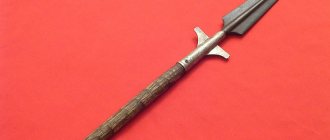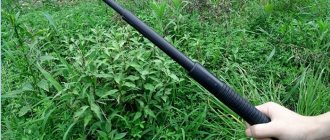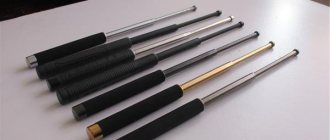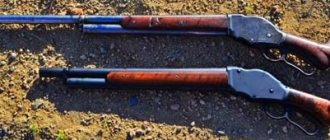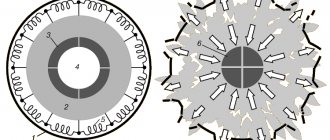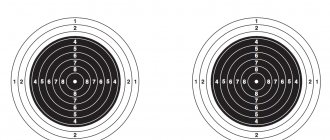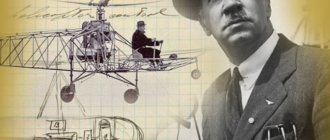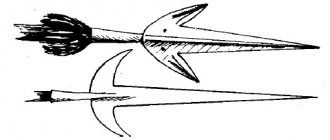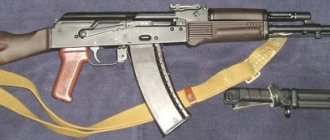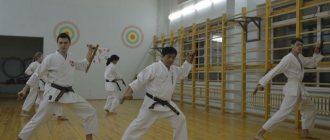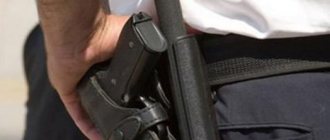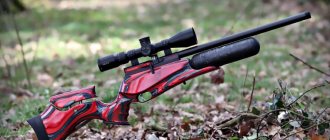The world's first clubs appeared at the dawn of human development. In the Stone Age, the club became an effective weapon to protect ancient man from danger. If stone, spears and darts could be used for hunting, then the club was always a weapon of self-defense or attack and was used in close combat.
Currently, batons have become much more humane, since many models are made of rubber, and in appearance they are more reminiscent of a simple stick. The technique of wielding a baton has also expanded significantly, and now it includes not only strikes, but also various painful techniques.
Types of batons and their classification
Currently, all modern batons are made from the following materials:
- Wooden. Classic material for making this weapon;
- Aluminum or steel batons;
- Textolite;
- Rubber.
Batons made of wood or metal, except for telescopic models, are usually used for sports. These are classic baseball bats, which in the CIS since the early 90s have become famous as a weapon of street punks.
An telescopic baton is definitely not suitable for baseball - it is a typical self-defense weapon. Strikes from a heavy metal baton can cause serious injury.
In addition, all batons are usually divided by length:
- The long ones must be at least 90 cm. As a rule, these are baseball bats. Sometimes there is even a metal folding baton of this length;
- Medium batons range in size from 45 to 90 cm. As a rule, various police models or security guard weapons fall into this group;
- Short models have a length from 20 to 45 cm. This is the size of a typical self-defense baton.
The rubber baton is the main and most humane weapon of the Russian police. They come in the following models:
- PR-73 is a classic rubber stick. The police baton, which was widely used in the USSR, is the progenitor of this model;
- An improved model is the PR-73F. Its main difference is the presence of a protective guard;
- PR-Tonfa is a very popular police baton in the early 2000s. Unfortunately, it is made of rubber, which does not allow you to take full advantage of the classic tonfa. Currently, domestic police rarely use such weapons;
- PR-89 is a telescopic baton with a metal handle. Used mainly by riot police.
Although carrying police batons is not prohibited, government officials have a very negative attitude towards this, so for self-defense it is better to choose a folding model. Carrying such weapons, as a rule, does not raise questions from the police.
Legal status
Russian legislation contains a rule on acceptable self-defense, including the use of special means, which include a baton. The legislator regulates the limit of self-defense, limiting the actions of the defending citizen to the degree of threat from the attacker.
This means that in an attempted theft, using a baton on the thief and causing moderate or severe injury will result in criminal prosecution for the defender.
Defense with a baton should pursue the principle of sufficiency, which means removing the threat and neutralizing attacks on property and the life and health of a citizen.
Therefore, when using a baton for an attacker, the degree of threat and the possible consequences of using such a weapon should be assessed. A baton in the hands of a citizen is capable of inflicting injuries incompatible with life to the attacker and, provided there is no direct threat to life (an attack on a citizen using bladed weapons or firearms, statements and murderous intentions against a citizen), a person who will inflict injuries incompatible with life on the attacker, which will entail his death - will suffer criminal punishment for exceeding the limits of necessary self-defense.
Modern telescopic batons that can cause irreparable damage to an attacker
History of police batons
Although at first glance it seems that police batons are a European invention, in fact this is not the case at all. It all started with the fact that Indian Sikhs helped England pacify popular uprisings in India. After this, the government decided to make the Sikhs a colonial police force. The new police used medium-length wooden batons as weapons. Noticing how effective and cheap these weapons were to produce, the British decided to arm their police with batons.
The first batons of the English police were very different from the Indian weapons, since the Europeans did not understand anything about Indian martial arts. The wooden English club was short and very thick at the end, which made it possible to deliver strong blows over short distances. The decrease in length was associated with the specifics of ancient English cities. Narrow streets, crowded pubs - all this made long weapons ineffective, but the short “Billy Club” did its job perfectly.
Soon English police weapons migrated to America. Due to the specifics of local, more spacious cities, American models were made longer. Until the mid-20th century, police officers did not know any special technique for using batons. The blows were delivered using the technique that was in use back in the Stone Age. In those years, there was no humane treatment of criminals, so the police hit them immediately on the head to stop resistance and prevent themselves from getting injured.
* * *
In many stores you can buy a folding baton, bat and other tools. Also, in many martial arts and combat sports, a stick, pole, fighting cane, staff-club or bat-club turns out to be an simulator of a combat sword or blade of ancient martial arts, which today have turned into sports styles, or sports simulations of fights and battles, and turn out to be good disciplines for body development, good gymnastic and physical education types of physical training. You can buy a folding baton - belt on this website.
Fencing with sticks. Miniature, Italy, 15th century.
Therefore, I decided to dedicate this site to the possibilities of both the applied use in different cases of our life of such objects and tools as a folding baton, bat and sports canes, and to the possibilities of using a fencing cane as a sports equipment for training and various gymnastic styles, as well as sports options martial arts And also for the reconstruction of games based on the Star Wars epic - Jedi culture.
New police batons
In 1961, a new hand-to-hand combat teacher appeared at the Los Angeles Police Academy, whose name was Robert Koga, he was a master of Japanese martial arts. Noticing that police officers did not even have basic hand-to-hand combat skills, he developed his own system for training cadets. In addition to the fact that employees began to master hand-to-hand combat, Koga developed a new police baton with rounded ends.
Using the Japanese technique of jo-jutsu (short stick fighting), the instructor taught police academy cadets how to deal with several opponents using only a short baton. The first Koga clubs had a length of 66 cm, but since the Americans had a more powerful physique, subsequently the length of the weapon began to fluctuate from 66 to 74 cm.
Overview of produced types
| Baton name | Surface | Length | Weight (without case) | ||||
| non-slip handle | ergonomic handle | folded | unfolded * | ||||
| ExB-16H | ExB-16HE | black Ni/chrome | 6.7″ / 170 mm | 16″ / 405 mm | 340 g | ||
| ExB-18H | ExB-18HE | black Ni/chrome | 7.1″ / 180 mm | 18″ / 455 mm | 370 g | ||
| ExB-21H | ExB-21HT | ExB-21HE | ExB-21HL | black Ni/chrome | 8.3″ / 210 mm | 21″ / 530 mm | 440 g |
| ExB-23H | ExB-23HE | black Ni/chrome | 9″ / 230 mm | 23″ / 585 mm | 500 g | ||
| ExB-26H | ExB-26HE | black Ni/chrome | 10.2″ / 260 mm | 26″ / 660 mm | 540 g | ||
* tolerance: -0.6″ (-15.2 mm) / +0.4″ (+10.1 mm)
technical manual
The emergence of tonfa-based police batons
In 1971, the American police received a new weapon - a baton with a transverse handle. These models, which resemble traditional Japanese tonfa, are still used by police officers around the world. In addition to the police, these batons are used by private security guards.
The patent for this weapon was obtained by the American Lon Anderson, who claimed that he was inspired to create this baton by the leg of a stool with a crossbar, which he used in the fights of his youth. Despite these assurances, one look at this weapon is enough to understand where it came from. The American tonfa is called PR-24. Aluminum or polycarbonate was used for its manufacture.
In the 1990s, these weapons reached Russia. True, domestic batons began to be made of rubber, which immediately made these weapons unsuitable for the traditional technique of working with Japanese tonfa. It is for this reason that police in Russia most often use such a baton as a simple stick with a guard.
The baton is the main weapon of a private security guard
Currently, most private security companies use batons of various types to arm their employees. In addition to the most popular model PR-24 and its analogues, security guards use the following types of batons:
- Telescopic baton. The advantage of this model is its compactness. A folding baton is usually made of steel;
- Spring baton. If a telescopic baton is used in battle more like a classic wooden weapon, then a spring weapon is more flexible. The wielding technique is something between fighting with a Cossack whip and an ordinary club;
- Stun baton. This model is quite interesting, but most of the samples sold in Russia are completely unsuitable for security guards. If a telescopic baton can be used in full contact, then this model simply crumbles with a strong impact. A stun gun is usually weak, so its use can only have a psychological effect.
As a rule, guards wear awkward models, hanging them on their belts for everyone to see. Since many domestic security companies neglect the physical training of their guards, there are often cases when their batons are simply taken away from them by hooligans.
Tips for use
In order for a telescopic baton to become an effective means of protection against the actions of intruders, when using such bladed weapons, you should pay attention to the following points:
- It is necessary to resort to the use of a baton only if you are sure that there is sufficient free space. Since most such means of self-defense do not have very impressive weight, a blow delivered without a wide scope may not produce the expected effect on the enemy.
- It is advisable to aim at the most vulnerable places on the attacker’s body. These are, first of all, the hands and areas unprotected by clothing.
- You need to understand that a telescopic baton for self-defense has a strong part - the tip area, and also a weak part - a third of the length closer to the handle.
- The main force of the blow should fall on the head of the baton, which greatly enhances the damaging effect.
Lantern baton and its features
Recently, many Internet resources have been selling compact baton flashlights. The sellers of this device claim that it is a very effective weapon that will be useful for protection against hooligans.
In fact, the baton lantern is a full-fledged flashlight, the body of which is shaped like a weapon. Naturally, they can inflict one or several blows on the attacker, but the lantern baton is not suitable for holding all-round defense. If you decide to purchase this controversial device, remember that you should not buy cheap Chinese models. They will fall apart after the first blow.
When choosing a flashlight-baton, you should give preference to models with a metal casing, and the thicker its walls, the better. Naturally, such models will cost several times more, but it’s worth it.
Czech clubs "ESP"
The ESP sliding batons have proven themselves to be excellent. Many tests carried out by users have shown that the weapon does not bend or break even from impacts on brick walls. The retractable design is simple and reliable. The “ESP” baton is made of hardened steel, which is why its price is an order of magnitude higher than its Chinese counterparts.
If you decide to purchase a baton for self-defense, it is better to opt for compact sliding models. The acquisition of such weapons is permitted, but they should only be used when absolutely necessary.
Transformation
Before use, the ESP telescopic baton is in a fairly compact, so-called folded state. But you can make just one vigorous movement of your hand to turn the compact cylinder into an unfolded baton, capable of causing significant bodily harm.
The cylinders are very well fixed after they are extended. This process occurs due to dry friction. Thus, after laying out, a very long stick made of steel appears in front of the eye. There is some friction between the cylinders. It is quite enough to hold the elements in their positions and prevent the baton from returning to its original position.
You can fold the telescopic baton back in the following way: to do this, just hold the weapon in a strictly vertical position, and then find a hard surface and hit it with the tip.
